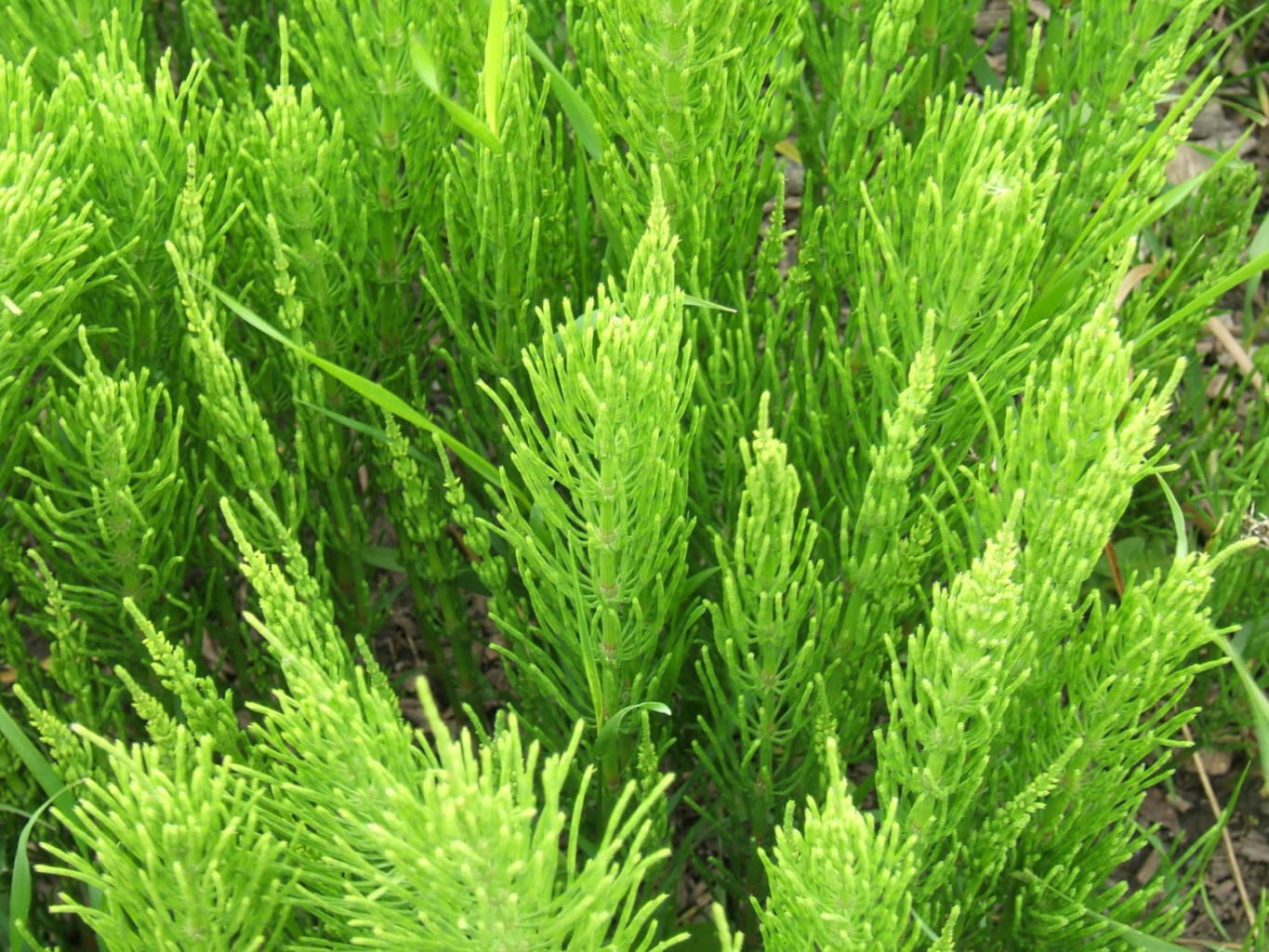By Tony Chalcraft
Many gardeners will be acquainted with Equisetum arvense, even if they don’t know its fancy scientific title. As with many botanical names, the Latin hints at the plant’s characteristics: ‘Equisetum’ links the Latin for horse (equu) with the word for hair or bristle (seta), while ‘arvense’ loosely translates as ‘of the field’. If you’ve not guessed it yet, I’m talking about field horsetail, more commonly known as horsetail or marestail! A recent conversation with a tortured allotmenteer prompted me to write about this common weed; in their view, horsetail is the evilest weed of all, one that had driven them to despair on their plot…
For me, there are far worse weeds than horsetail, but that said, it’s certainly a nuisance. Luckily, there are ways of keeping it in check. I’ll get to these shortly, but first, let’s take a closer look at horsetail, as understanding more about it can help to stop it getting out of hand.
Equisetum arvense is a survivor. Sometimes dubbed the ‘living fossil’, it belongs to a group of plants that predate the dinosaurs. Native to the UK, it lurks dormant and often unnoticed through winter. In spring, it tentatively pokes shortish shoots topped with an odd brownish cap above ground. As growth picks up, the shoots sprout green, stringy leaves in a bunched mass that resembles an upside-down horse tail, hence the name. Unchecked, these can eventually reach half a metre in height. When well established, Equisetum arvense can cloak the ground, creating a horsetail ‘lawn’ or mini forest. Beneath the soil, it produces a mass of dark, blackish roots or rhizomes that penetrate deeply. Horsetail can reproduce both from spores on the young shoots in spring and, far more readily, from fragments of the rhizomes. It is most prevalent on damp soils, especially those that are fairly acidic. It occurs far less often where the soil is well-drained or alkaline.
Although reducing acidity by liming or improving drainage may help a little, neither is likely to have much effect – in my experience, weakening horsetail by cutting or cultivation can have some impact. Hoeing the young shoots off in spring, soon after they emerge, sets back growth, but needs repeating several times for best results. Careful digging to remove growth above and below the soil can also be quite effective, but the rhizomes are black and difficult to spot. They also infiltrate into the subsoil, so complete removal is impractical. Beware of breaking the rhizomes into many fragments, as tiny pieces can resprout. Never rotovate horsetail-infested soil! Another method of control is shading out; On vegetable plots, this is only really feasible by forgoing a crop and covering the soil with materials such as thick plastic sheeting, to exclude light. Any cover needs to remain in place for an entire growing season for maximum impact. Even then, complete eradication may not be achieved. Although some sources advocate chemical control, this is not an option for those of us who grow organically (nor is it sure to work). Herbicides available to gardeners are not particularly potent against horsetail, with repeated applications necessary to achieve lasting results.
There is another alternative: learn to live with horsetail. Lacking ‘normal’ leaves and remaining relatively short, it is not a weed that will overshadow and outcompete most crops. In many respects, it is the untidiness of horsetails amongst cultivated plants that bothers gardeners, especially those who prefer a pristine plot. You can keep horsetail in check, but be realistic – this is a weed that’s been around for aeons, so attempts to eradicate it entirely are likely to be futile!










Add a comment